Sustainable Agriculture: Growing Food for a Healthy Planet
Imagine a world in which we can support farmers, ensure that everyone has enough to eat, and grow food without harming the environment. That is what sustainable agriculture aims to achieve. To put it simply, it refers to farming practices that preserve the health of our planet for next generations.
What is sustainable agriculture?
Sustainable agriculture is a method of farming that aims to meet the current needs for food and fiber while ensuring the long-term health of the environment and ecosystems. It involves socially conscious, commercially feasible, and environmentally friendly methods. In addition to supporting biodiversity and the welfare of nearby communities and farmers, the objectives include preserving or improving the quality of the land, water, and air.
Key Principles of Sustainable Agriculture
Conservation of Natural Resources: To keep an ecosystem that is healthy and strong, sustainable agriculture focuses on keeping the soil healthy, using water wisely, and saving biodiversity.
Economic viability: It emphasises the importance of fair trade, helping farmers make money, and using low-cost tools to make sure firms can make money without hurting the environment.
Social Responsibility: Sustainable agriculture involves engaging with local communities, ensuring fair labor practices, and considering the social impacts of farming on nearby populations.
Together, these principles make up a framework for sustainable agriculture. They stress the importance of an all-around, unified method of farming that balances the well-being of the environment, the ability to make money, and fairness for everyone.
Sustainable Agriculture Practices
Sustainable farming includes many different methods and techniques that try to keep the environment in balance, make farming profitable, and be socially responsible. Here are some important techniques for sustainable farming:
Organic Farming:
- Avoids the use of synthetic pesticides and fertilizers.
- Biological pest control, crop rotation, and other natural ways are used.
- Focuses on maintaining healthy soil by using cover crops and organic waste.
Agroecology:
- Integrates ecological principles into agricultural systems.
- Emphasizes the importance of biodiversity, natural resource conservation, and sustainable farming methods.
- Focuses on understanding and optimizing interactions between plants, animals, and the environment.
Permaculture:
- Designs agricultural systems to mimic natural ecosystems.
- Promotes diversity in plant and animal species to enhance system resilience.
- Utilizes sustainable and regenerative practices to create self-sustaining food production systems.
Agroforestry:
- Integrates trees and shrubs into agricultural landscapes.
- Enhances biodiversity, improves soil health, and provides additional income sources.
- It helps with carbon sequestration and mitigates climate change impacts.
Conservation Tillage:
- Reduces or eliminates traditional plowing to minimize soil disturbance.
- Preserves soil structure, reduces erosion, and enhances water retention.
- Supports microbial activity in the soil, promoting nutrient cycling.
Water Conservation and Management:
- Implements efficient irrigation practices to minimize water use.
- Utilizes rainwater harvesting and water recycling techniques.
- Emphasizes water conservation to mitigate the impact of agriculture on water resources.
Crop Rotation and Diversification:
- Rotates crops to prevent soil depletion and control pests and diseases.
- Diversifies crops to enhance resilience against environmental fluctuations.
- Improves overall soil health and fertility.
Integrated Pest Management (IPM):
- Focuses on biological control methods to manage pests.
- Minimizes the use of chemical pesticides, employing natural predators and beneficial insects.
- Monitors and assesses pest populations to make informed and targeted interventions.
Cover Cropping:
- Planting cover crops during off-seasons to protect and enrich the soil.
- It prevents erosion, adds organic matter to the soil, and enhances nutrient availability.
- Supports weed control and improves overall soil structure.
Precision Farming:
- Utilizes technology such as sensors, GPS, and data analytics for precise management of resources.
- Optimizes planting, irrigation, and nutrient application to reduce waste and increase efficiency.
- Supports sustainable farming through data-driven decision-making.
Farmers can help the long-term health of the environment, keep their businesses going, and encourage social duty in their communities by using these sustainable farming methods.
Technological Innovations in Sustainable Agriculture
New technologies are very important for promoting healthy agriculture because they make it more efficient, less harmful to the environment, and more productive overall. Here are some of the most important technology advances in sustainable farming:
1. Precision Farming:
Smart Sensors: Utilizing sensors to collect data on soil conditions, moisture levels, and crop health for precise resource management.
GPS Technology: Enabling farmers to precisely plan and monitor field activities, optimizing the use of water, fertilizers, and pesticides.
Automated Machinery: Implementing robotics and automated machinery for tasks such as planting, harvesting, and weeding reduces labor and resource requirements.
2. AgTech Solutions:
Drones and Satellite Imaging: Providing real-time aerial imagery for crop monitoring, disease detection, and yield prediction.
Blockchain Technology: Enhancing traceability and transparency in the supply chain, ensuring fair trade, and quality assurance.
Data Analytics: Analyzing large datasets to identify patterns, optimize farming practices, and make informed decisions.
3. Vertical Farming and Indoor Agriculture:
Hydroponics and Aeroponics: Growing crops without soil, using nutrient-rich water solutions to optimize resource use and reduce land requirements.
LED lighting mimics natural sunlight to enhance plant growth in controlled environments, reducing the need for extensive land use.
4. Genetic Engineering and Biotechnology:
Drought-Resistant Crops: Developing crop varieties that can thrive in water-scarce conditions.
Pest-Resistant Crops: Creating genetically modified crops that are resistant to pests reduces the need for chemical pesticides.
Improved Nutritional Content: Enhancing the nutritional value of crops to address nutritional deficiencies.
5. Smart Irrigation Systems:
Sensor-Based Irrigation: Using soil moisture sensors to optimize irrigation schedules and reduce water wastage.
Drip and Micro-Irrigation: Delivering water directly to plant roots, minimizing evaporation, and improving water use efficiency.
6. Aquaponics and Integrated Farming Systems:
Aquaponics: Combining aquaculture (fish farming) with hydroponics to create a symbiotic relationship where fish waste fertilizes plant growth.
Integrated Farming: Combining different agricultural activities such as crop cultivation, livestock, and aquaculture for a more sustainable and diversified approach.
7. Biological Pest Control:
Beneficial Insects: Introducing natural predators to control pest populations, reducing the reliance on chemical pesticides.
Microbial Biopesticides: Using microorganisms to control pests and diseases in a targeted and environmentally friendly manner.
8. 3D Printing in Agriculture:
Customized Farm Equipment: Designing and producing specialized tools and equipment for specific farming needs reduces waste and costs.
Precision Planting: Creating precise and customizable planting structures for optimized crop growth.
These technological advances in sustainable agriculture help make better use of resources, protect the environment, and build strong farming systems that can handle the difficulties of a changing climate. By using these tools together, farmers can meet the needs of a growing population while leaving as little of an impact on the environment as possible.
Government Policies and Initiatives
- Subsidies and Incentives for Sustainable Practices
- Governments support farmers who choose sustainable methods, encouraging more people to farm in a way that protects our planet.
- Regulations Supporting Environmental Conservation
- Rules are in place to ensure that farms don’t harm the environment, promoting responsible farming.
Global Collaborations for Sustainable Agriculture
Countries work together to share knowledge and resources, creating a global effort to make farming sustainable.
Challenges and Solutions
Climate Change Impacts
Adaptation Strategies: Farmers find ways to grow food in changing climates, adapting to new conditions.
Mitigation Measures: Actions are taken to reduce the impact of farming on climate change.
Economic Barriers
Access to Resources for Small Farmers: Efforts are made to help small farmers access the tools and resources they need.
Financial Support Systems: Sustainable farming is supported financially to make it accessible to all.
Education and Awareness
Training Programs for Sustainable Practices: Farmers and communities are educated about sustainable methods.
Consumer Awareness and Demand: People are informed about the importance of supporting sustainable farming, creating a demand for responsibly grown food.
Success Stories in Sustainable Agriculture
- Case Studies of Farms Embracing Sustainable Practices
- Real-life examples show that sustainable farming works and benefits both farmers and the environment.
- Positive Environmental and Economic Outcomes
- Farms practicing sustainability see positive changes, from healthier ecosystems to increased profits.
Future Trends in Sustainable Agriculture
Emerging Technologies
- New technologies continue to make farming even more sustainable and efficient.
- Global Initiatives and Partnerships
- Worldwide efforts grow, with countries working together to ensure a sustainable food future.
- Evolving Consumer Preferences
- As people become more aware, the demand for sustainably produced food continues to rise.
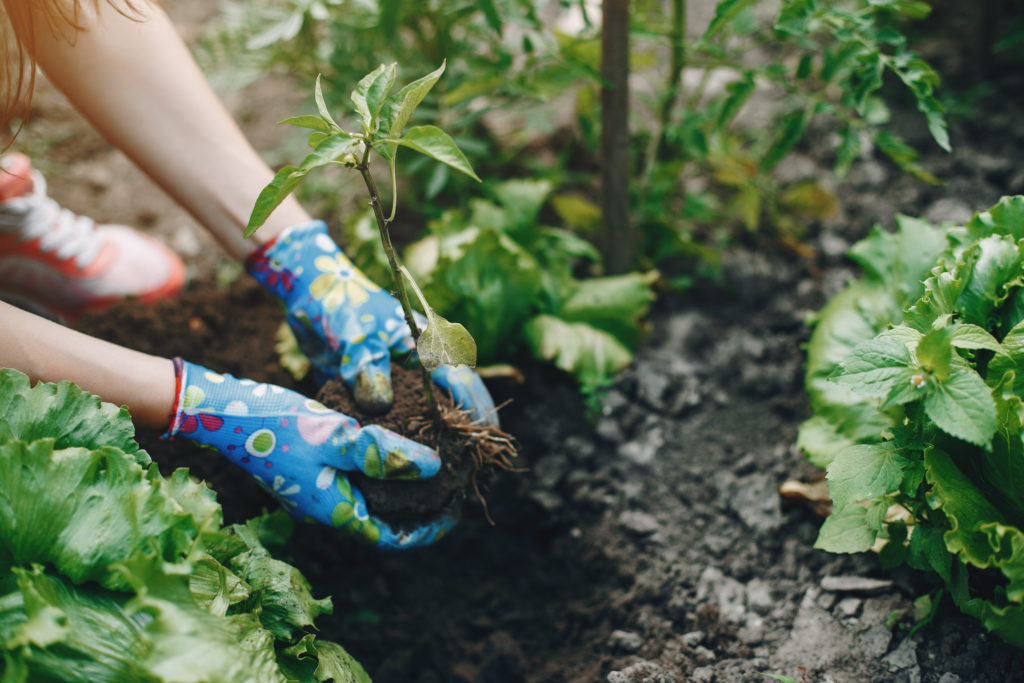
Sustainable agriculture examples
A number of examples of sustainable agriculture methods and programs show how farmers and communities are changing their ways to be better for the environment, the economy, and society. Here are some examples that stand out:
Organic Farming:
Organic Valley Cooperative: This cooperative of organic farmers emphasizes sustainable practices, including avoiding synthetic pesticides and promoting animal welfare.
Agroecology:
MasAgro in Mexico: The MasAgro program works on sustainable intensification, which means using agroecological methods to make Mexican agriculture more productive and resilient.
Permaculture:
Zaytuna Farm in Australia: With its sustainable design principles, water management, and regenerative agriculture methods, Zaytuna Farm is a permaculture demonstration site.
Agroforestry:
The Land Institute in the USA: The Land Institute is researching perennial crops and agroforestry systems to develop more sustainable and ecologically sound agricultural practices.
Conservation Tillage:
No-Till Farming in Brazil: No-till farming has been widely adopted in Brazil’s soybean production, reducing soil erosion and preserving soil structure.
Water Conservation and Management:
Israel’s Drip Irrigation Systems: Israel has pioneered efficient drip irrigation systems, maximizing water use efficiency in arid and semi-arid regions.
Crop Rotation and Diversification:
Three Sisters Farming: Derived from Native American agriculture, Three Sisters Farming involves intercropping corn, beans, and squash to enhance soil fertility and pest management.
Integrated Pest Management (IPM):
California Almond Orchards: California almond farmers use less chemical pesticides by releasing beneficial insects and other integrated pest management techniques.
Cover Cropping:
Midwestern Cover Crop Council in the USA: The council promotes cover cropping to improve soil health, prevent erosion, and enhance nutrient cycling in the Midwest.
Precision Farming:
John Deere’s Precision Agriculture Solutions: Companies like John Deere offer precision farming technologies, such as GPS-guided tractors and sensors, to optimize resource use and reduce environmental impact.
Vertical Farming and Indoor Agriculture:
Vertical Harvest in Wyoming: Vertical Harvest is a hydroponic greenhouse that grows produce vertically, maximizing space utilization and reducing the environmental footprint.
Genetic Engineering and Biotechnology:
Golden Rice Project: This project aims to address vitamin A deficiency by developing genetically modified rice with enhanced nutritional content, contributing to food security.
Smart Irrigation Systems:
Netafim in Israel: Netafim is a global leader in drip and micro-irrigation systems, promoting water-efficient practices in agriculture worldwide.
Biological Pest Control:
Ladybug Release in Organic Farms: Organic farms often release ladybugs to control aphid populations naturally, reducing the need for chemical pesticides.
3D Printing in Agriculture:
Open Source Ecology’s 3D-Printed Farm Equipment: Open Source Ecology develops 3D-printable farm equipment designs, promoting affordability and accessibility for farmers.
These examples showcase the diversity of sustainable agriculture practices globally, emphasizing the importance of adapting farming methods to local conditions while prioritizing environmental stewardship and community well-being.
sustainable agriculture methods
Sustainable farming techniques include many different methods that are meant to encourage caring for the environment, making money, and being socially responsible. Here are some key sustainable agriculture methods:
Agroecology:
- Polyculture: Growing multiple crops together in a synergistic manner to enhance biodiversity and pest control.
- Agroforestry: Integrating trees and shrubs into agricultural systems to provide additional ecological benefits, such as improved soil fertility and habitat for beneficial organisms.
Organic Farming:
- Crop Rotation: Alternating the types of crops planted in a specific area over time to enhance soil health and break pest cycles.
- Companion Planting: Planting different crops together to maximize mutual benefits, such as pest control and nutrient uptake.
Conservation Tillage:
- No-Till Farming: Minimizing soil disturbance by avoiding traditional plowing, which helps preserve soil structure, reduce erosion, and enhance water retention.
Cover Cropping:
- Green Manure Cover Crops: Planting specific crops during fallow periods to improve soil fertility, suppress weeds, and prevent erosion.
- Legume Cover Crops: Including leguminous plants that fix nitrogen in the soil, promoting nutrient availability for subsequent crops.
Water Conservation and Management:
- Drip Irrigation: Using a targeted irrigation system that delivers water directly to the plant roots minimizes water waste and improves efficiency.
- Rainwater Harvesting: Collecting and storing rainwater for agricultural use reduces dependence on conventional water sources.
Integrated Pest Management (IPM):
- Biological Control: Introducing natural predators, parasites, or pathogens to control pest populations, reducing reliance on chemical pesticides.
- Crop Monitoring: Regularly assessing pest populations and crop health to make informed and targeted pest management decisions.
Precision Farming:
- Global Positioning System (GPS): Using GPS technology to precisely plan and manage field activities, optimizing resource use, and reducing waste.
- Variable Rate Technology: Adapting input application rates based on specific needs in different areas of a field to maximize efficiency.
Genetic Engineering and Biotechnology:
Drought-Resistant Crops: Developing crop varieties with improved tolerance to drought conditions, reducing water requirements.
Pest-Resistant Crops: Creating genetically modified crops that are resistant to specific pests decreases the need for chemical pesticides.
Permaculture:
- Guild Planting: Designing plant communities that mutually support each other, providing diverse functions such as pest control, nutrient cycling, and habitat creation.
- Keyline Design: Managing water flow across a landscape to optimize water retention and distribution.
Smart Irrigation Systems:
- Soil Moisture Sensors: Using sensors to monitor soil moisture levels and adjusting irrigation schedules accordingly minimizes water use.
Biodynamic Farming:
- Biodynamic Preparations: Applying specific organic preparations to enhance soil fertility, plant health, and overall farm vitality.
Local and Sustainable Food Systems:
- Community-Supported Agriculture (CSA): Establishing direct relationships between farmers and consumers, promoting local and sustainable food production.
By using these environmentally friendly farming methods, farmers can help ecosystems stay strong, improve the health of the land, save water, use fewer synthetic inputs, and make food production more sustainable and balanced.
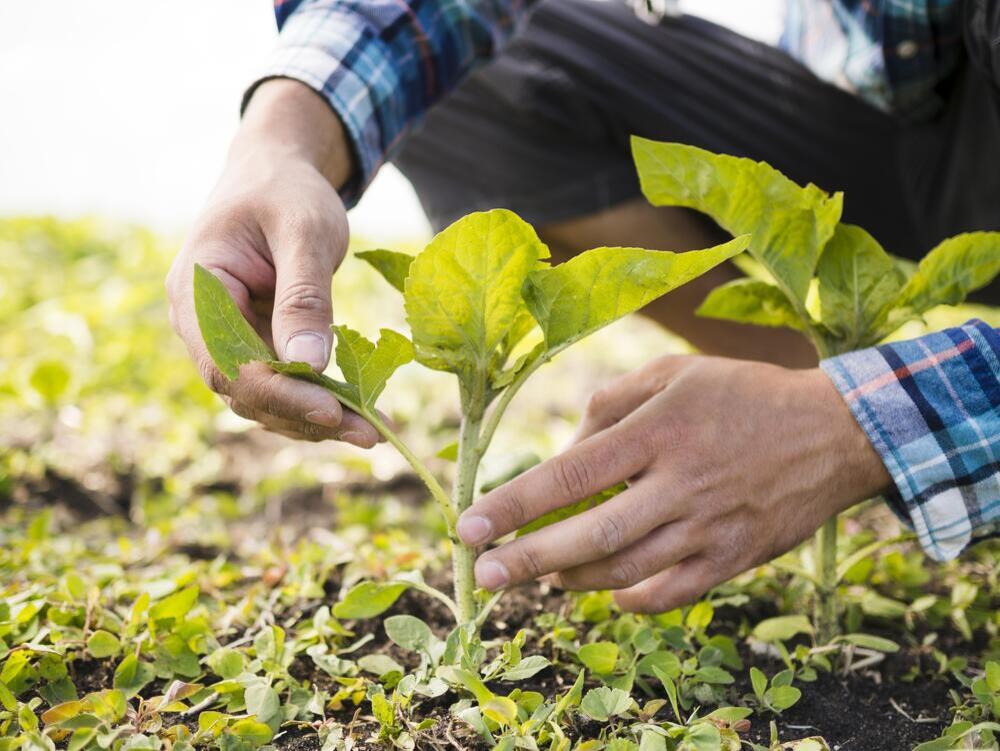
Sustainable Agriculture Benefits
Sustainable agriculture offers a multitude of benefits, addressing environmental, economic, and social concerns. Here are some key advantages of sustainable agriculture:
1. Environmental Conservation:
Soil Health: Practices like cover cropping and reduced tillage contribute to improved soil structure, reduced erosion, and enhanced nutrient retention.
Biodiversity: Sustainable farming methods, such as agroecology and polyculture, support diverse ecosystems, fostering the health of plants, animals, and microorganisms.
Water Conservation: Techniques like drip irrigation and rainwater harvesting help minimize water usage and reduce the environmental impact of agriculture.
2. Climate Change Mitigation:
Carbon Sequestration: Agroforestry and conservation tillage contribute to the sequestration of carbon in soils and vegetation, mitigating the effects of climate change.
Adaptation Strategies: Sustainable agriculture practices, such as crop diversification, help farmers adapt to changing climatic conditions.
3. Resource Efficiency:
Energy Conservation: Sustainable agriculture often involves less reliance on fossil fuels, as practices like precision farming and organic farming require fewer energy-intensive inputs.
Water Use Efficiency: Efficient irrigation methods and water-saving practices reduce water waste, making agriculture more sustainable in water-scarce regions.
4. Reduced Chemical Inputs:
Pesticide and Herbicide Reduction: Integrated Pest Management (IPM) and organic farming methods minimize the use of synthetic pesticides and herbicides, reducing environmental pollution.
Fertilizer Efficiency: Precision farming and organic practices enhance nutrient management, reducing the need for synthetic fertilizers.
5. Economic Viability for Farmers:
Increased Profitability: Sustainable practices often lead to improved soil fertility, crop yields, and resource management, contributing to the long-term financial viability of farms.
Market Access: Growing consumer demand for sustainably produced food creates opportunities for farmers to access premium markets.
6. Community and Social Benefits:
Community Engagement: Sustainable agriculture fosters stronger connections between farmers and local communities, promoting community-supported agriculture (CSA) and direct sales.
Job Creation: Diversified and sustainable farming systems can generate employment opportunities in local communities.
7. Healthier Food and Improved Nutrition:
Organic Farming’s Nutritional Benefits: Organic crops often contain higher levels of certain nutrients, providing consumers with healthier food choices.
Reduced Exposure to Chemical Residues: Minimizing the use of synthetic pesticides and fertilizers in sustainable agriculture results in lower chemical residues in food.
8. Resilience to Market Fluctuations:
Diversification of Crops: Crop diversification in sustainable agriculture helps farmers withstand market fluctuations and reduces dependence on a single crop.
Adaptability: Sustainable practices enhance the resilience of farming systems, enabling farmers to adapt to changing economic and environmental conditions.
9. Long-Term Land Productivity:
Soil Conservation: Sustainable farming methods prevent soil degradation, ensuring that the land remains productive for future generations.
Water Resource Protection: Practices like riparian buffer zones and proper water management protect water sources and maintain their quality.
10. Preservation of Rural Heritage:
Cultural and Landscape Preservation: Sustainable agriculture practices contribute to preserving rural landscapes and the cultural heritage associated with traditional farming methods.
Sustainable agriculture encourages a balance between the health of the environment, the growth of the economy, and the happiness of people. This makes the food system more adaptable and long-lasting for the future.
Conclusion
In conclusion, sustainable agriculture is like a superhero for our planet, ensuring we can grow food today without harming tomorrow. By supporting farmers who use sustainable practices and making informed choices about the food we eat, we can all be part of creating a healthier and happier world for generations to come.
FAQ
Q: What is sustainable agriculture?
A: Sustainable agriculture is a farming approach that focuses on long-term environmental, economic, and social viability. It aims to meet current food needs without compromising the ability of future generations to meet their own needs.
Q: What are the key principles of sustainable agriculture?
A: Some important concepts are protecting natural resources like soil, water, and biodiversity, making sure farmers can make a living, and encouraging social responsibility in communities.
Q: What are common sustainable farming practices?
A:To get long-lasting results, some practices are organic farming, agroecology, permaculture, conservation tillage, water conservation, integrated pest management (IPM), precision farming, and genetic engineering.
Q: How does sustainable agriculture benefit the environment?
A:It improves the health of the soil, stops soil erosion, saves water, helps biodiversity, slows climate change by storing carbon, and uses fewer synthetic inputs, which is better for the environment.
Q: How does sustainable agriculture benefit farmers?
A: Sustainable practices make the land more fertile, lower the cost of inputs, make businesses more resistant to changes in the market, and give them access to higher-end markets. They make farms more likely to stay in business in the long run.
Q: Does sustainable agriculture contribute to climate change mitigation?
A: Yes, environmentally friendly farming methods like agroforestry and less tilling the soil help store carbon, which lessens the effects of climate change.
Q: How does sustainable agriculture promote social responsibility?
A: It involves local communities, makes sure that workers are treated fairly, backs community-supported agriculture (CSA), creates jobs, and improves social well-being.
Q: Can sustainable agriculture feed a growing population?
A:Yes, using sustainable methods can raise output, cut down on waste, and build strong farming systems that help ensure food security around the world.
Q: Are there government policies supporting sustainable agriculture?
A: Many countries have policies that support and enforce sustainable farming practices by giving farmers incentives, subsidies, and rules.
Q: What role does technology play in sustainable agriculture?
A: In sustainable agriculture, technology like genetic engineering, precision farming, and agtech solutions are very important for making the best use of resources, lowering the damage to the environment, and raising total efficiency.
Also Read:



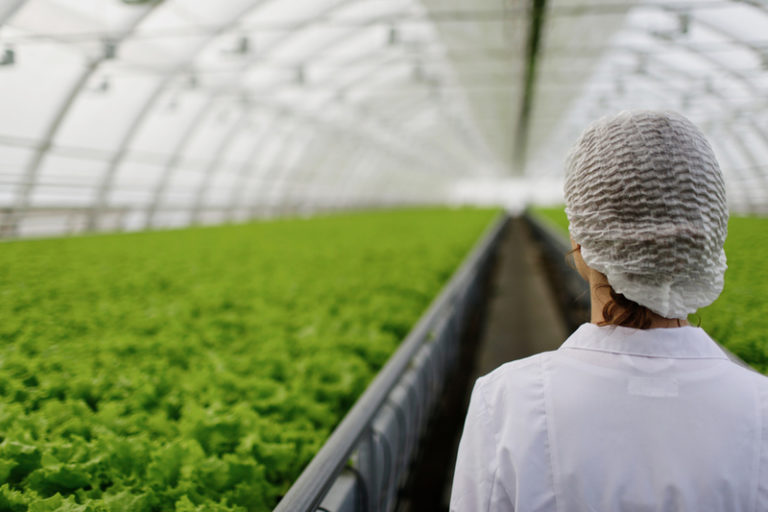
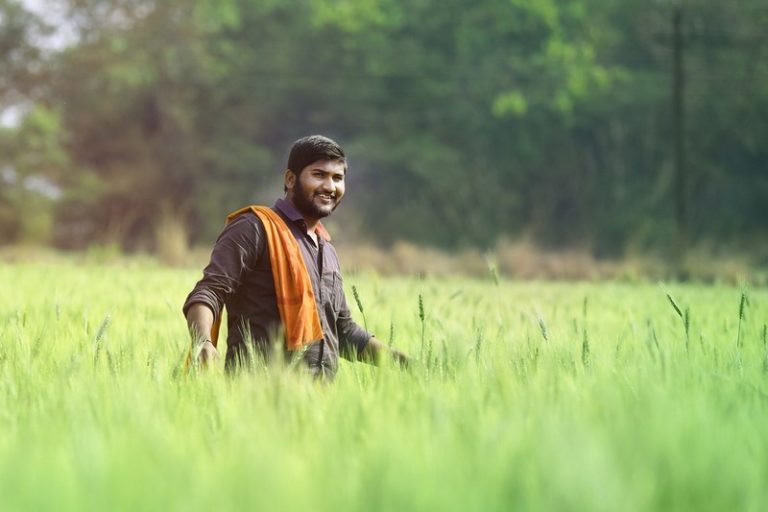
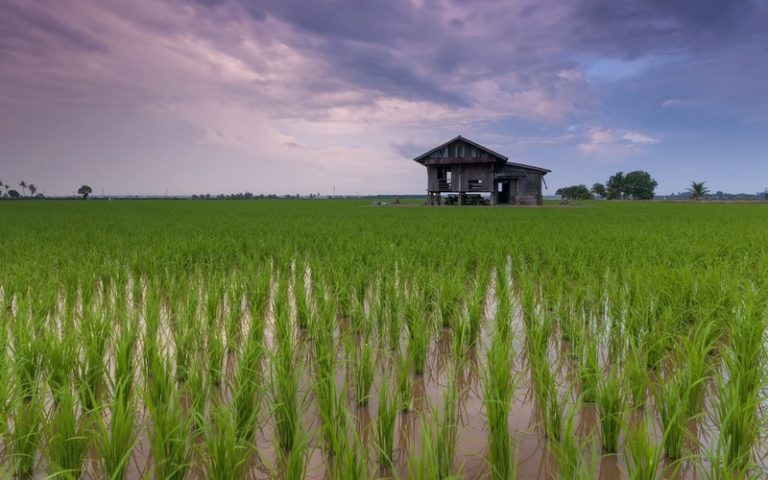


Thanks I have recently been looking for info about this subject for a while and yours is the greatest I have discovered so far However what in regards to the bottom line Are you certain in regards to the supply